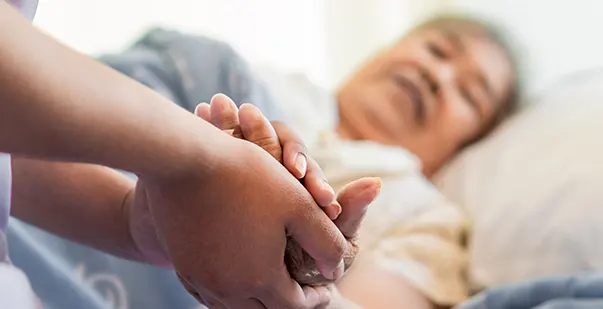Death rattle is a condition that leads to terminal secretions or respiratory gurgling. It is a common phenomenon that occurs in individuals who are nearing the end of life or the ones who can pass away. It is usually characterized by rattling or gurgling sounds which are produced when a person breathes and this is often caused when the mucus and fluids in the throat and airways accumulate at one place.
In this blog post, we will look at the topic of death rattle breathing from the perspective of CPR and first aid practitioners. We will actually discuss the common causes of a death rattle, and what treatment options are there and are available to us so that we can manage this condition. So, Join us on this journey to understand the death rattle.
1. Understanding Death Rattle
Death rattle breathing is a common phenomenon in terminally ill patients and is usually noisy, panting, and gurgling are observed in such patients. So for us, it’s very important to know the basic nature and implications of death rattle because it is a key aspect of providing compassionate care to individuals in this stage of their life.
Characteristics of Death Rattle:
The death rattle has a very classic symptom which is an audible rattling or gurgling sound. These sounds result from the accumulation of secretions in the throat and airways as the body’s ability to clear them decreases and reduces as we age.
Psychological Impact:
The presence of a death rattle can lead to very strong emotional responses be it the patients or their loved ones. The pain and distress which is actually caused by these sounds can vary to a great degree. But it nevertheless affects individuals’ psychological well-being and perceptions of the dying process in a very adverse way.
Role in End-of-Life Care:
Understanding and acknowledging the occurrence of death rattle is essential in providing holistic end-of-life care in cases of rattle death breathing. Healthcare providers and all family members, even the care caregivers should be prepared to address any of the emotional and psychological issues. This is because only then can we ensure that patients experience comfort, dignity, and support, especially during this time.
Read more: Death Rattle: What It Is, Causes, Treatment, and More
Common Causes of Death Rattle
Several common factors contribute to the development of death rattle in individuals. So now let us know more and deep dive into it.
Physiological Changes:
There are many physiological changes that occur and they can lead to the production of death rattle. Now, these factors include weakened swallowing reflexes of a person, decreased consciousness of the person to a great degree, and respiratory muscle weakness as well, so all of these are common factors. These basically lead to the accumulation of secretions in the throat and airways and result in the sounds of death rattle.
Secretion Production:
The body’s natural processes of producing mucus and secretions continue as usual even as a person nears death. So, in terminally ill patients, the ability to effectively clear these secretions diminishes and so this leads to their accumulation in the airways. This buildup of secretions is a key factor in the development of a death rattle.
Disease Progression:
The underlying terminal illness or condition of the patient can also influence the occurrence of death rattle. Diseases such as advanced cancer, neurological disorders, or end-stage organ failure can contribute to the presence of death rattle by affecting the body’s ability to manage secretions and maintain normal respiratory function.
Signs and Symptoms of Death Rattle
A whole range of physical symptoms can be seen and these can be distressing. One common symptom is quite common and is basically noisy breathing and gurgling sounds. Recognize these signs and symptoms of death to provide appropriate care and support.
Increased Respiratory Effort:
Patients who are experiencing death rattle may exhibit increased respiratory effort as they struggle to breathe effectively because the accumulation of secretions in their airways can be seen. This leads to either very rapid, shallow breathing or irregular breathing patterns. Caregivers and healthcare providers should observe these changes in respiratory patterns as possible indicators of death rattle.
Changes in Consciousness:
As death rattle progresses, patients may also exhibit changes in consciousness. They may become more subdued, less responsive, or slip into periods of altered awareness. These changes in consciousness can be linked to the physiological effects of death rattle and the underlying disease process, signaling the patient’s transition towards the end of life.
By recognizing and understanding these signs and symptoms of death rattle, caregivers and healthcare professionals can provide appropriate first aid care and support to terminally ill patients, ensuring their comfort and dignity as they approach the end of life.
Read more: Death Rattle: What It Is, Causes, Treatment, and More
Conclusion
In conclusion, understanding death rattle breathing is crucial for healthcare practitioners and caregivers involved in end-of-life care. By recognizing its causes, signs, and management strategies, they can provide compassionate support to terminally ill patients. Through education and awareness, we can ensure dignity and comfort for individuals nearing the end of life, fostering a peaceful transition for both patients and their loved ones. Explore more about death rattle and its implications in emergency care through comprehensive resources and training, including online first aid courses.






